by Daniel Hathaway
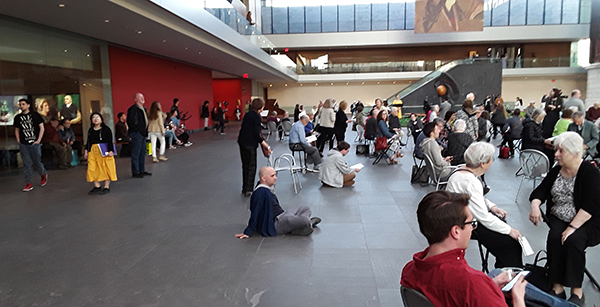
Considering the cubic volume of the space, his forces were modest. Three harpsichordists (Peter Bennett, Michael Quinn, and Qin Ying Tan) were deployed with their instruments in a triangle on the main floor. Four trombonists (Lee Allen, Zoe Cutler, Katie Lambert, and Evelyn Proffit) held down positions in the second-floor allées at the east and west ends. Twelve female voices of the Cleveland Chamber Choir were spread out on the main and second floors, and the Cleveland Institute of Music Children’s Choir was seated on benches toward the east end. Mobile phones at each position dictated the timing of musical events or fed pitches to singers, some of whom sang at times through megaphones.
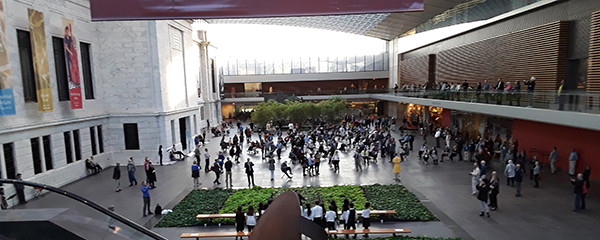

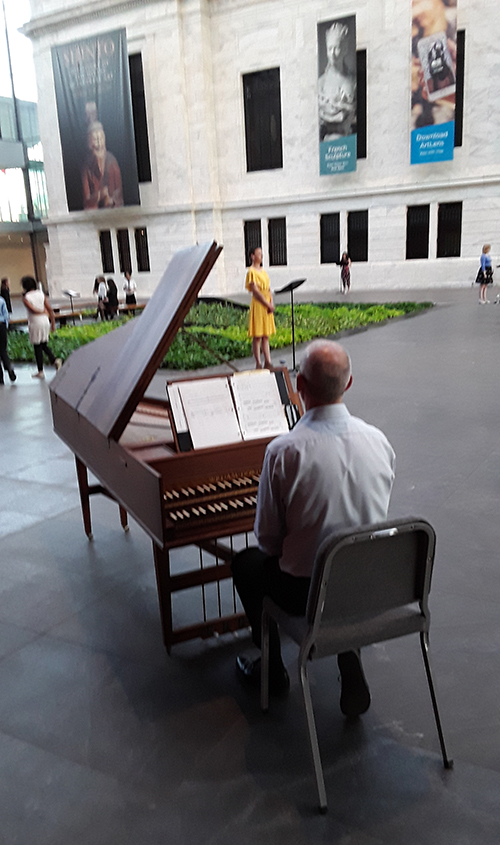
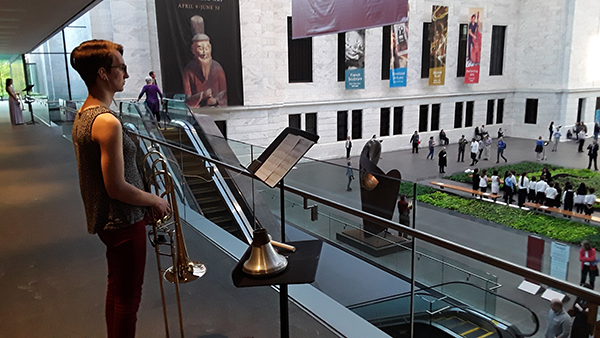
All in all, it was probably more fun to be actively involved in performing Ergün’s score than merely engaging with it as a listener. Every performer I talked to said it was terrific to be part of that experience.
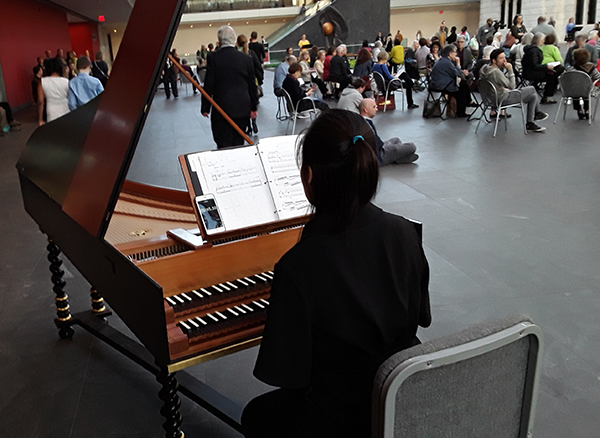
Photos by D.H.
Published on ClevelandClassical.com May 21, 2019.
Click here for a printable copy of this article



